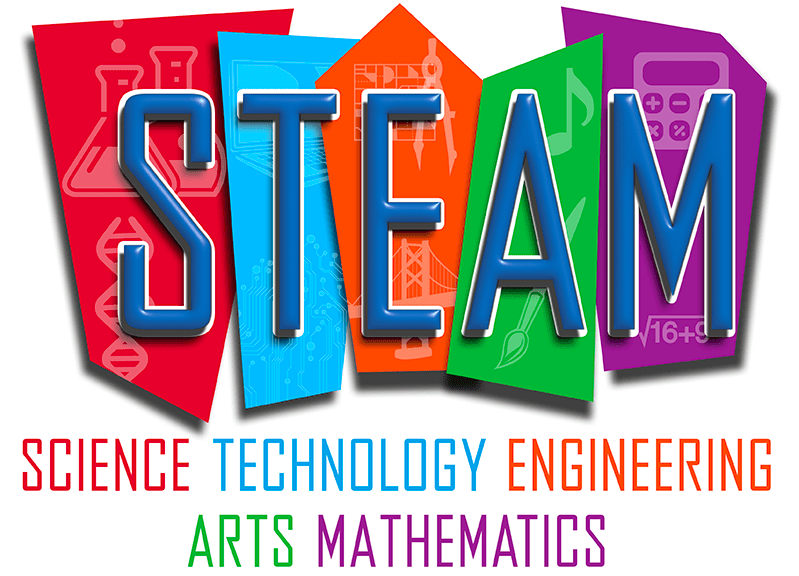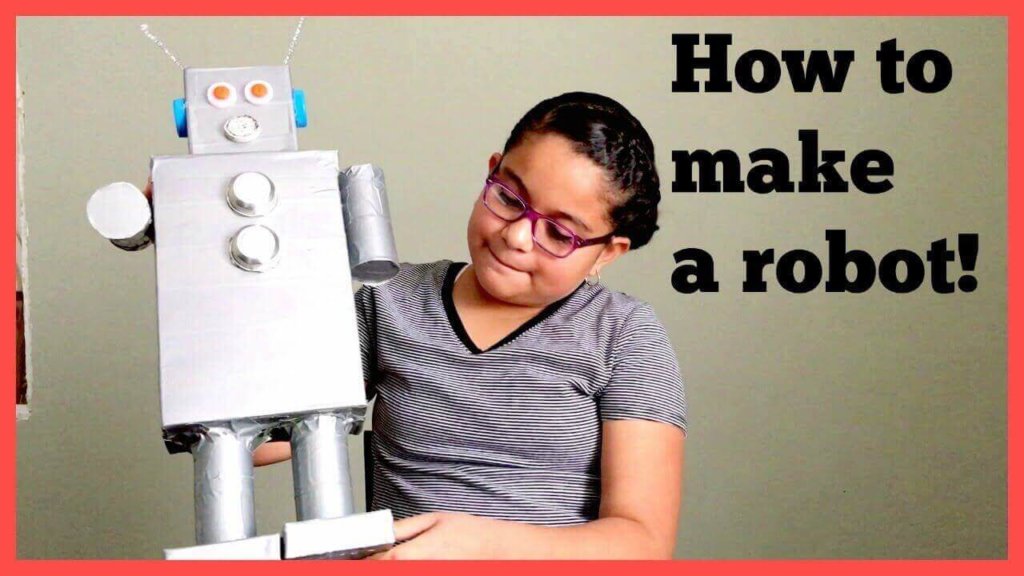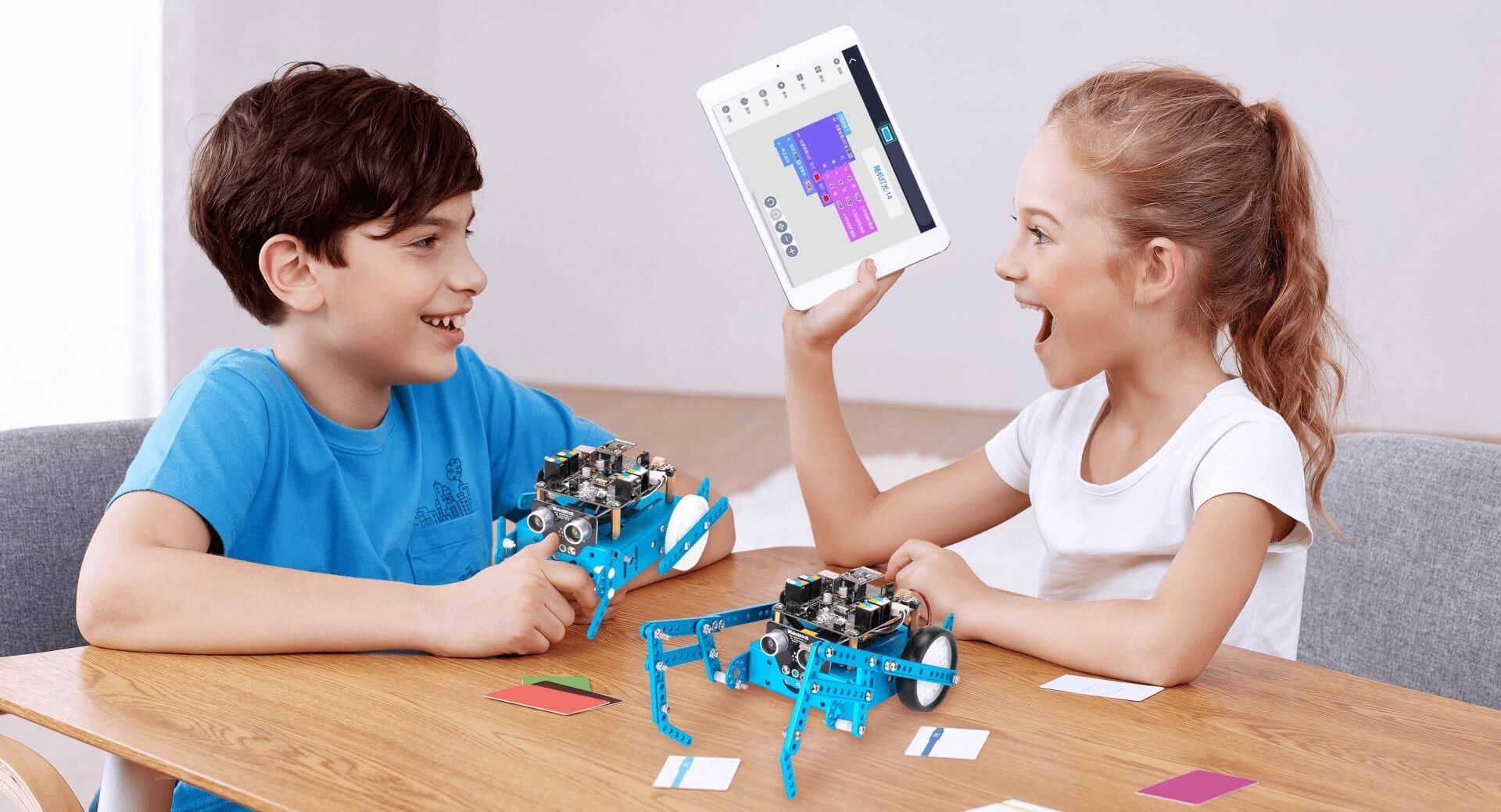Mar 20, 2024 | Makeblock
In recent years, there has been a notable shift in educational paradigms towards a more holistic approach—one that integrates Science, Technology, Engineering, Arts, and Mathematics (STEAM). This movement is not merely a trend but a transformative force reshaping classrooms worldwide.
Today, we embark on a journey to explore the profound impact of STEAM in schools, uncovering 5 engaging STEAM programs that empower students, nurture creativity, and cultivate essential skills for the future. Join us as we navigate the exciting landscape of STEAM education, unlocking its potential to shape the next generation of thinkers, creators, and problem solvers.
What is STEAM Education?

STEAM Education is an interdisciplinary approach to learning that integrates concepts and practices from Science, Technology, Engineering, Arts, and Mathematics. Unlike traditional educational silos, STEAM encourages students to explore connections between these disciplines, fostering critical thinking, creativity, collaboration, and problem-solving skills.
In STEAM education, students engage in hands-on, inquiry-based learning experiences that often involve real-world problems and projects. For example, they might design and build a model bridge to understand engineering principles, create digital artwork using coding and graphic design tools, or conduct experiments to explore scientific concepts.
One of the key strengths of STEAM education is its ability to prepare students for the demands of an increasingly complex and interconnected world. By combining the analytical and technical skills of STEM with the creative and expressive elements of the arts, STEAM empowers students to think innovatively and adaptively, equipping them with the tools they need to thrive in a variety of fields and industries.
Moreover, STEAM education emphasizes skills such as communication, collaboration, and critical thinking, which are essential for success in the 21st-century workforce. By fostering a holistic approach to learning and problem-solving, STEAM education helps students develop a deeper understanding of the world around them and prepares them to tackle the challenges of the future with confidence and creativity.
The Importance of STEAM in Schools
The importance of STEAM (Science, Technology, Engineering, Arts, and Mathematics) in schools cannot be overstated in today's rapidly evolving world. As we navigate through the complexities of the 21st century, the integration of these disciplines is essential for preparing students to thrive in a diverse range of fields and industries. Here are several reasons why STEAM education is of paramount importance:
1. Fostering Innovation: Innovation is the driving force behind progress in virtually every aspect of society. By combining the analytical and problem-solving skills of STEM with the creativity and expression of the arts, STEAM education cultivates a culture of innovation. Students learn to think critically, approach problems from multiple perspectives, and develop innovative solutions to real-world challenges.
2. Preparing for the Future Workforce: The jobs of tomorrow will require diverse skill sets that encompass both technical proficiency and creative thinking. STEAM education equips students with the skills and knowledge they need to succeed in a rapidly changing workforce. Whether pursuing careers in technology, healthcare, design, or entrepreneurship, STEAM-educated individuals are better prepared to adapt to new challenges and opportunities.
3. Promoting Interdisciplinary Learning: In the real world, problems are rarely confined to one discipline. By integrating multiple subject areas, STEAM education encourages interdisciplinary learning and helps students make connections between different fields of study. This holistic approach fosters a deeper understanding of complex concepts and prepares students to tackle multifaceted challenges with confidence.
4. Enhancing Critical Thinking Skills: STEAM education emphasizes critical thinking, problem-solving, and analytical reasoning—skills that are essential for success in today's knowledge-based economy. Through hands-on, inquiry-based learning experiences, students learn to ask questions, gather evidence, evaluate information, and draw logical conclusions. These critical thinking skills are invaluable both inside and outside the classroom.
5. Encouraging Creativity and Expression: The arts play a crucial role in STEAM education by fostering creativity, self-expression, and innovation. Whether through visual arts, music, theater, or dance, students are encouraged to explore their creative potential and communicate their ideas in unique ways. This emphasis on creativity not only enriches the learning experience but also prepares students to become more well-rounded individuals.
6. Addressing Societal Challenges: Many of the most pressing challenges facing society today—from climate change to healthcare disparities—require interdisciplinary solutions. STEAM education empowers students to address these challenges by equipping them with the skills, knowledge, and mindset needed to make a positive impact on the world around them.
STEAM education is essential for preparing students to succeed in a complex, interconnected world. By integrating science, technology, engineering, arts, and mathematics, STEAM education fosters innovation, prepares students for the future workforce, promotes interdisciplinary learning, enhances critical thinking skills, encourages creativity and expression, and equips students to address societal challenges. As we strive to create a brighter future for the next generation, investing in STEAM education is more important than ever.
Why "A" is Vital in STEAM Education?
The inclusion of "Arts" in STEAM education enriches the learning experience, promotes creativity and innovation, enhances communication skills, fosters interdisciplinary connections, encourages cultural appreciation and diversity, and cultivates critical thinking and problem-solving abilities. By embracing the arts as an integral component of STEAM education, we empower students to become well-rounded individuals who are prepared to navigate the complexities of the modern world with confidence and creativity. The inclusion of "A" in STEAM Education is crucial for several reasons.
1. Creativity and Innovation: The arts foster creativity, imagination, and innovative thinking. By incorporating artistic practices into STEAM education, students are encouraged to explore new ideas, take risks, and think outside the box. This creative mindset is essential for solving complex problems and driving innovation in fields ranging from technology to engineering.
2. Expression and Communication: Artistic expression is a powerful means of communication. Through visual arts, music, theater, and other forms of creative expression, students learn to communicate their thoughts, feelings, and ideas in unique and meaningful ways. This ability to express oneself effectively is a valuable skill in both personal and professional contexts.
3. Interdisciplinary Connections: The arts provide a bridge between different disciplines within STEAM education. For example, the use of visualizations and diagrams can help students understand complex scientific concepts, while incorporating elements of technology and digital media can enhance artistic creations. By integrating the arts into STEAM education, students gain a deeper understanding of the interconnectedness of various subjects.
4. Cultural Appreciation and Diversity: Art exposes students to diverse cultures, perspectives, and experiences. Through the study of art history, literature, and multicultural arts, students gain a greater appreciation for the richness and diversity of the human experience. This exposure fosters empathy, tolerance, and understanding, which are essential qualities in an increasingly interconnected world.
5. Critical Thinking and Problem-Solving: Engaging with artistic practices requires critical thinking and problem-solving skills. Whether analyzing a piece of artwork, interpreting a musical composition, or choreographing a dance, students learn to observe, analyze, and evaluate information critically. These skills are transferable to other areas of STEAM education and are essential for success in academic and professional settings.
5 Engaging STEAM Programs in Schools
In today's rapidly evolving educational landscape, the integration of STEAM (Science, Technology, Engineering, Arts, and Mathematics) programs in schools has become a cornerstone of fostering innovation, critical thinking, and interdisciplinary learning. From robotics teams to coding clubs, and makerspaces to STEAM challenges, these programs exemplify the transformative power of STEAM education in shaping the next generation of thinkers, creators, and innovators.
Here are 5 STEAM (Science, Technology, Engineering, Art, and Mathematics) programs that teachers can incorporate into their curriculum to enhance learning experiences and promote interdisciplinary thinking:
1. Coding and Robotics
Coding is a crucial skill in the technological era. Kids get the hang of this skill in their K-12 study, particularly in STEAM education.
It is a great idea to introduce students to coding through coding robots like mBot2 and mBot Ultimate, and have them program robots to perform tasks or navigate mazes, integrating computer science with problem-solving skills.
Coding robots is an engaging and educational activity that combines computer programming with the physical world. It involves writing code to control the actions of a robot, which can range from simple tasks like moving forward and turning to more complex actions like recognizing objects, responding to sensors, and even communicating with other devices.
Select an appropriate coding robot and coding platform for your student's age and skill level. Some popular options include:
Makeblock mBot2: For Age 8+

As a cutting-edge coding robot, mBot2 is a beginner-friendly robot designed to inspire creativity and innovation for learners above 8 years old. With its user-friendly interface and versatile capabilities, the mBot2 provides an engaging platform for hands-on coding experiences.
1. Support Block-based, Python: mBot2 offers versatile coding capabilities, empowering users to program and control the robot using Block-based coding language and Python. With its intuitive coding interface, users can easily create and execute commands to control the mBot2's movements, interact with sensors, and perform various tasks.
2. Multi-Sensor Integration: With a variety of built-in sensors including light sensor, microphone, gyroscope, and accelerometer, and other sensors like ultrasonic sensor and quad RGB sensor, the mBot2 can detect and respond to its environment in real-time.
3. Modular Design: mBot2 features a modular design that allows for easy customization and expansion with additional sensors, modules, and accessories. It can be compatible with 500+ Makeblock electronic & mechanical parts, LEGO bricks.
4. Educational Content: mBot2, as an educational robot kit, comes with a wealth of free educational content, including tutorials, projects, and lessons designed to teach coding and robotics concepts in a fun and engaging way.
5. mBlock5 Compatibility: Compatible with mBlock 5, free and open-source software of Makeblock, mBot2 allows users to program and control the robot using block-based coding or Python programming language. Its intuitive coding function allows users to easily program the robot using Makeblock's compatible coding software, mBlock 5. This powerful software provides a seamless coding environment, empowering users to unleash their imagination and bring their ideas to life through interactive projects and games.
From introductory coding lessons to advanced robotics projects, mBot2 is suitable for a wide range of applications in educational settings, makerspaces, and STEM enrichment programs.
Makeblock mBot Ultimate: For Age 12+
mBot Ultimate is an advanced and versatile robot that is perfect for students who want to get advanced coding and robot-building experience. It is suitable for both individual and team-based projects, allowing students to explore various STEAM concepts in a fun and interactive way. The robot's primary strength lies in its coding function, which enables students to program their mBot to perform a variety of tasks, from simple movements to complex behaviors.
1. 10-in-1 Robot Kit: The kit comes with assembly guides for 10 different designs, serving as a launchpad for users to explore their own inventions and creativity.
2. 160+ Components: The kit includes over 160 mechanical parts and modules, such as motors, gears, tracks, wheels, and cables, providing a vast array of building possibilities.
3. Programming Interface: mBot Ultimate can be programmed using mBlock 5, a free and open-source software supporting block-based coding and Python programming that allows students to create code blocks and commands to control the robot's actions.
4. Sensors and Expansion Ports: Equipped with various sensors, including an ultrasonic sensor, light sensor, and gyroscope, mBot Ultimate can interact with its environment and respond to different stimuli. mBot Ultimate has multiple expansion ports that support a range of external sensors and modules, enabling students to customize and expand the robot's capabilities.
5. Educational Resources: mBot Ultimate comes with a variety of free educational resources, including lessons, tutorials, and project ideas, to help teachers integrate the robot into their STEAM curriculum.
By incorporating mBot Ultimate into STEAM activities, educators can provide students with a dynamic and engaging learning experience that bridges the gap between theoretical concepts and practical applications. The robot's coding function is central to its educational value, enabling students to develop a range of skills that are essential for success in the 21st century.
After picking up suitable robots for students, introduce them to the fundamentals of coding, such as variables, loops, conditionals, and functions. Use the programming language associated with your chosen platform and provide examples of how these concepts are used in robot control.
Create a structured curriculum that progresses from simple tasks to more complex projects. Start with basic movement commands and gradually introduce more advanced topics like sensor input, data processing, and autonomous behavior.
Encourage students to experiment and learn through hands-on activities. Some examples of coding robot activities include:
Line Following: Program the robot to follow a line drawn on the floor.
Obstacle Avoidance: Teach the robot to detect and avoid obstacles in its path.
Object Manipulation: Have the robot grasp and move objects using a gripper or claw.
Maze Solving: Challenge students to program a robot to navigate through a maze.
By incorporating coding robots into your educational program, you not only provide a fun and interactive learning experience but also equip students with valuable skills that are increasingly important in our technology-driven world.
2. Customizable Game Board Creation
Creating a customizable game board is a multifaceted STEAM activity that allows students to engage with various disciplines in a hands-on and creative way. This project integrates science, technology, engineering, art, and mathematics as students design, cut, and assemble their own game boards using a laser cutter.
Begin by discussing the principles of game design, including the balance between challenge and reward, and the use of visual elements to enhance the gaming experience. Introduce the concept of game board dimensions and the importance of scale, using mathematical measurements to ensure that game pieces and the board are proportionate. Teach students how to use design software (such as Adobe Illustrator, Inkscape, or Tinkercad) to create a digital blueprint of their game board, incorporating elements like paths, playing pieces, and interactive zones.
The second step is to choose the right materials and tools. Discuss the properties of different materials suitable for laser cutting, such as wood, acrylic, or cardboard, and how these properties affect the gameplay and durability. Encourage students to consider the aesthetic appeal of their chosen material and how it will contribute to the overall look and feel of the game.
Here, we would like to recommend a versatile laser cutter suitable for educational settings. xTool P2 stands out for its outstanding safety features, ensuring a secure environment for children to operate the machine safely at home. Its full enclosure design effectively contains the laser and any smoke it generates.
Moreover, the P2 offers an automatic material advancement feature, allowing continuous engraving of items up to 118 inches in length. This functionality is supported by its compatibility with an Automatic Conveyor Feeder, resembling a conveyor belt that feeds materials into the machine for engraving.
Most importantly, the P2 comes with a comprehensive bundle of educational resources. It includes free software and supports Lightburn, catering to a wide range of learning needs from beginners to advanced users on various devices, including smartphones and laptops. Additionally, we provide a wealth of resources such as professional lessons, extensive tutorials, and engaging projects to support your family's learning journey in laser cutting.
Under the supervision of a trained adult, students will operate the laser cutter to cut out their game board and components, learning about the technology and physics involved in the process. Ensure that all safety protocols are followed, including wearing appropriate protective gear and working in a well-ventilated area.
Students assemble their game boards and personalize them with paints, markers, stickers, or other decorative elements, applying artistic techniques to enhance their creations. Discuss the importance of assembly techniques and how structural integrity affects the game play.
This customizable game board creation activity not only fosters creativity and problem-solving but also provides a practical application of STEAM concepts, helping students see the real-world relevance of what they learn in the classroom.
3. Design a Rube Goldberg Machine
Designing a Rube Goldberg machine is a fantastic STEAM activity that encourages students to combine creativity, problem-solving, and an understanding of physical principles. How to set up a Rube Goldberg Machine in class and how does this task integrate with STEAM principles?
Start by establishing a simple end goal for the machine. This could be something like turning on a light, popping a balloon, or pouring a teacher a glass of water. The goal should be safe, achievable, and engaging for students. Then, encourage students to brainstorm ideas for different steps (or "acts") that could lead to the final goal. This is where they can get creative and think about how to use everyday objects in unconventional ways.
Before beginning the design procedures, simply explain how each principle of STEAM is represented in this project:
Science: Students will need to understand and apply basic scientific principles, such as gravity, force, and energy transfer, to make their parts of the machine work.
Technology: The use of tools and materials, as well as potentially incorporating simple electronics or coding (like using microcontrollers for automation), falls under technology.
Engineering: Designing and building the machine requires engineering skills, including planning, problem-solving, and the application of scientific and mathematical principles.
Art: The aesthetic and creative aspects of the machine are part of the art component. Students can express their creativity in the design and presentation of their machine.
Mathematics: Calculating distances, angles, timing, and other precise measurements are essential mathematical aspects of the project.
Provide a variety of materials for students to use, such as cardboard, string, tape, marbles, dominoes, pulleys, levers, and other recyclable or household items. Allow time for teams to design and build their sections of the machine. Encourage them to sketch out their plans and consider how their section will connect with others. Once the initial designs are complete, have each group test their section and make necessary adjustments. Then, connect the sections and test the entire machine, making further adjustments as needed. Ask students to document their design process, including their challenges, how they overcame them, and what they learned. This can be done through written reports, videos, or presentations.
Suppose you want to fully unravel the magic of students' machines. In that case, it's a good idea to organize a "Rube Goldberg Day" where each group presents their machine to the class, demonstrating how it works and highlighting the STEAM concepts involved.
By setting up a Rube Goldberg Machine in class, students not only get to engage in a fun and challenging activity but also learn how to apply STEAM principles in a practical and collaborative setting. This project helps develop critical thinking, problem-solving, teamwork, and communication skills, all while having fun with science and art.
4. Create a Stop-Motion Animation
Creating a stop-motion animation involves taking a series of photographs of objects or characters, and moving them slightly between each shot to create the illusion of movement when the images are played in sequence.
Creating a stop-motion animation is a creative and engaging STEAM activity that allows students to explore the principles of animation, storytelling, and digital media production. Here's a step-by-step guide for teachers to set up a stop-motion animation project in the classroom:
Explain the concept of stop-motion animation to the students, where objects are manipulated one frame at a time to create the illusion of movement when the sequence is played. Show examples of stop-motion animations, such as excerpts from movies like "Coraline" or "The Nightmare Before Christmas," as well as student-made projects.
Highlight how stop-motion animation integrates STEAM principles:
Science: Understanding the basics of motion and how the human eye perceives it.
Technology: Using digital tools and software to capture and edit the animation.
Engineering: Building and manipulating objects or characters within the scene.
Art: Crafting the visual elements, including set design, character creation, and visual storytelling.
Mathematics: Precise measurements and timing are crucial for smooth transitions between frames.
Students can design and create their characters and sets using a variety of materials, such as clay, paper, cardboard, or even digital 3D models if using software that allows for it. Discuss the importance of lighting and background to enhance the story and create a believable world.
Decide on the tools and software needed for the project. For simple animations, a smartphone or tablet with a stop-motion app (like iMovie for iOS or Adobe Premiere Rush) can be sufficient. If using a computer, introduce the chosen animation software and its basic functions to the students.
Teach students how to set up their scene, capture the first frame, and then make small adjustments to the characters or objects to create the illusion of movement. Emphasize the importance of patience and precision, as stop-motion requires shooting one frame at a time.
Creating a stop-motion animation is a multifaceted project that not only teaches students about animation but also encourages them to think critically, problem-solve, and collaborate, all while integrating and applying STEAM concepts in a fun and creative way.

5. Build 3D Geometric Sculptures
Building 3D geometric sculptures is an excellent STEAM activity that integrates mathematics, spatial awareness, and artistic creativity. This project encourages students to explore geometry in a hands-on and tangible way, while also fostering problem-solving and fine motor skills.
Teachers can begin by discussing the basics of 3D geometry, including shapes, volume, surface area, and the properties of common 3D objects such as cubes, pyramids, cylinders, and spheres. Explain how these shapes can be combined and manipulated to create unique sculptures. Then encourage students to sketch their designs, labeling the different 3D shapes and indicating how they will connect or interact with each other.
After brainstorming and materials collection, students can start building their sculptures according to their design plans. In this step, encourage them to think about balance and stability, as well as how to effectively use the properties of the shapes they've chosen. As students work on their sculptures, have them calculate the volume, surface area, or other geometric properties of the individual shapes and the sculpture as a whole. Then instruct them to discuss how these mathematical concepts apply to their sculptures and how they contribute to the final form.
By engaging in the construction of 3D geometric sculptures, students not only develop a deeper appreciation for geometry but also experience the practical applications of mathematical concepts in a creative and artistic context. This interdisciplinary approach to learning helps to solidify understanding and fosters a love for both mathematics and art.

Conclusion
In conclusion, the integration of STEAM programs in schools offers a wealth of opportunities for students to engage in hands-on learning, foster creativity, develop critical thinking skills, and prepare for future success. From robotics teams to coding clubs, and makerspaces to STEAM challenges, these programs provide diverse avenues for students to explore their interests and expand their horizons beyond traditional classroom settings.
By embracing STEAM education, schools not only equip students with the knowledge and skills needed for 21st-century careers but also instill a lifelong passion for learning and discovery. As we look to the future, it is clear that the interdisciplinary approach of STEAM will continue to play a crucial role in shaping the next generation of innovators, problem solvers, and leaders.
As educators, parents, and community members, let us continue to support and advocate for the expansion of STEAM programs in schools, ensuring that all students have the opportunity to thrive in an increasingly complex and interconnected world. Together, we can empower the next generation to unleash their full potential and make meaningful contributions to society through the power of STEAM education.




